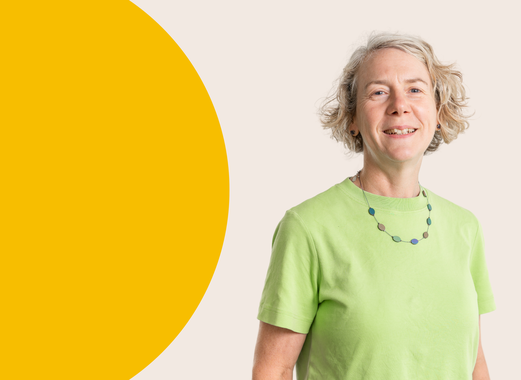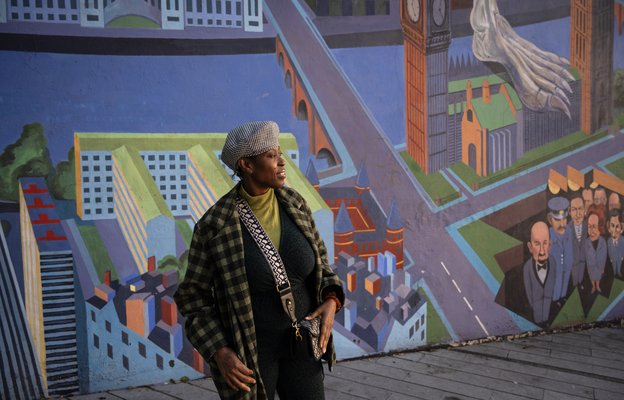
In 2022, we launched our first programme to use a fully participatory approach. Here, grants manager Joanna Wootten reflects on the disability justice fund, what we learned, and why you should think about Spiderman.
Perhaps the first place to start is by saying - it got better!
We talk about participatory grant making as though it’s a process, a bit like an excel spreadsheet or another committee. But it’s much more than this – and this surprised me.
The disability justice fund was our first area of work to fully use a participatory approach. We recruited an advisory panel of Disabled leaders, campaigners and activists, who led on shortlisting and decision-making (read about the recruitment process here).
It’s one of the best things I’ve done at Trust for London. It’s also probably the hardest.
Together, we distributed £2.5m in grants to deaf and disability led organisations (DDPOs) over 2 funding rounds, with a particular focus on development grants, and intersectionality.
It’s one of the best things I’ve done at Trust for London. It’s also probably the hardest.
During the first round of funding, we encountered bumps and challenges – anticipated and unanticipated. When Trust for London staff and disability justice fund panel members staff met for a reflection session last autumn, we agreed that the second round of funding had worked a lot better. We’d learned from the bumps of the first round, and been able to build on the fragile trust that had been interwoven.
Want me to stop waffling, save yourself some pain and skip to our recommendations based on these experiences? No worries – our 10 top tips can be found here.
So, why was it sometimes tricky? Three big reasons
- Emotion: Bringing your whole self to the process
- Power: ‘With great power comes great responsibility’
- Time: ‘Time’s winged chariot hurrying near’
Stick with me, and it’ll become clear.
You’ve probably seen a poster or attended a workshop encouraging you to bring your whole self to work. The reality is often it’s easier not to. We operate on auto-pilot - sending out emails and organising meetings. When making funding decisions, we deploy similar behaviours: utilising strategic goals, due diligence processes and risk matrixes, all help to dilute emotion and weight, as well as reducing the risk of bias.
I’d expected it to be more of the same when working with our panel participants – different people but the same decision-making process. How wrong I was!
Money = Power in our society, and if you’re a funder, you often take for granted the power that you have. Our participants became hugely aware of the power that they now had, and it weighed heavily. They were very conscious that they could now decide who got the funding, and who didn’t.
As the panel members were disability activists, this was tough. They knew that the DDPO sector was chronically underfunded, and that their decisions could have a huge impact on the disability movement, as well as individual organisations. They were all too aware of Peter Parker/Spiderman’s maxim: ‘With great power comes great responsibility’ and this added a layer of emotional stress that I hadn’t anticipated.
Our participants became hugely aware of the power that they now had, and it weighed heavily. They were very conscious that they could now decide who got the funding, and who didn’t.
Sometimes I felt like the jam filling of a sandwich, squeezed between the pressing needs of applicants and panel participants. Applicants want to know fast if they’ve been successful or not (and quite rightly so, this is best practice), and panel members need time to reflect fully.
IVAR talks about the importance of making decisions quickly so that applicants are not kept waiting in the dark. At the same time, panel participants wanted, needed and deserved time to do the job of reviewing applications properly. They needed time to:
- Navigate being new to grant making
- Juggle the work alongside other commitments, including their day jobs
- Feel the emotional weight of decisions, beyond the procedural journey
- Have space for access reasons. All participants were disabled, and a number were managing chronic illnesses/fluctuating conditions and/or energy levels.
This was particularly challenging in Round 1, where we recruited the panel members after the fund had already been launched. We learned from this and factored in more time for Round 2, as well as being transparent with all potential applicants from the start about the timeline. So even if applicants didn’t hear quickly, they did know when they would find out.
Reviewing power distribution
The authors of our learning review – Dr Lisa Gee and Ben Furner – identified that we had focused so hard on transferring power to people with lived experience, that we hadn’t thought enough about sharing the knowledge we, as funders and as people, have.
By keeping quiet and not sharing our knowledge and opinions were we depriving the panel of power? They observed that ‘The biggest effects of this were seen in the decision that Disabled Trust for London staff did not contribute their grant making expertise, sector knowledge or expertise by experience during advisory panel meetings.’
It was actually quite hard for us Disabled staff to feel that we had to repress our full selves, and we felt better in Round 2 when we were able to bring our full selves to the process.
Everyone agreed that this approach was counterproductive, and this was changed for Round 2, where Disabled grant managers could vote alongside panel members. We developed a process which ensured that panel members could never be outnumbered even if conflicts of interest meant some couldn’t vote.
Remember I talked about emotion earlier? It was actually quite hard for us Disabled staff to feel that we had to repress our full selves, and we felt better in Round 2 when we were able to bring our full selves to the process. We were able to be part of the process, without dominating it, helped hugely by the support of a skilled external facilitator.
So, this is why it got better – we adjusted our processes to allow for better power distribution and time management, which all helped with emotion regulation.


